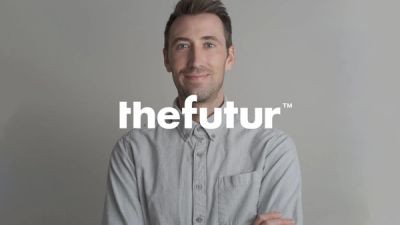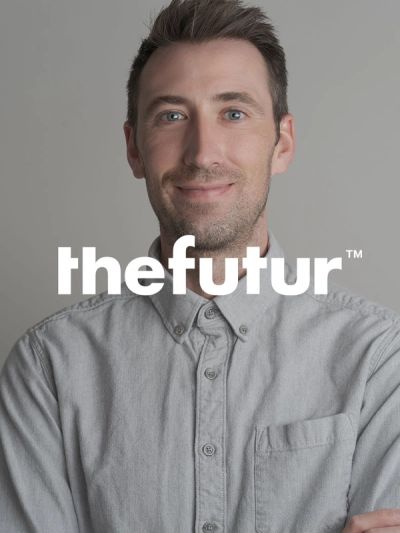
Hello My Name Is...: A Practical Guide to Naming
Naming a brand should be stimulating, inspiring, and meaningful. It also requires a litany of practical tasks you may not have thought of. Writer/Strategist Jo Beck shares her insights on how it’s done at our studio.
Naming a brand is as energizing as it is challenging. It requires ambition and imagination, but also careful consideration of limitations: practical, cultural, and psychological. Our team finds so much joy in the creatively stimulating process of naming, and generally in ideas that inspire and resonate without being predictable. What we don’t often get is an opportunity to discuss the numerous practical considerations, challenges, and hurdles that are part of the process.
At Trollbäck+Company, we’re often called upon to name brands before we design identities. Here’s the checklist we use to help make the naming process more streamlined and less complex.
Start with specific criteria.
First things first: a name should be meaningful, memorable, and easy enough to pronounce.
Beyond that, however, it’s important for a name to ladder up to an established strategic foundation. What does the brand stand for, and what does it need to communicate? If this is a full rebrand, consider what equity is important to maintain, and how they’ll help make the conceptual transition between the old and new name.
Once a strategic anchor is dropped, it can be helpful to articulate the style of the name we’re looking to develop (i.e. descriptive, evocative, abstract, familiar, portmanteau, invented), but we find it’s often more fruitful to develop names not based on style, but a broader creative territory.
Our naming process begins with articulating several creative territories to explore that ladder up to the brand’s strategy (if we’re naming a shoe, one territory may focus on comfort, one on style, one on quality). Using a territory to guide the naming makes for a less prescriptive process, and can inspire themes from which many styles of names can be written.
Go wide.
Names draw on associations; to start, make as many as possible. Whatever form of free writing helps – morning pages, stream of consciousness, categorized lists, mind maps – it can be beneficial to aim for quantity over quality at first, drawing connections between criteria and all the different associations with those words. This is how we break into new areas of possibility, and grow our thinking in a ranging but organized way. We’re then able to come back together as a prepared group, where the creative process really shines. In a group setting, there are no bad ideas, and we can examine different associative threads together to focus our results, and move to the next step. Together, it’s much easier to see which ideas have legs and which ones fall flat, and to discover great names that didn’t come from obvious places.
Don’t skimp on due diligence.
Once we have a set of naming selects, it’s crucial to approach the vetting process methodically. At this point we often have hundreds of names – and lots of gray area. It’s important to keep track of all of it for reference later.
There are no hard-and-fast rules for how to do it, but we always start with a simple Google search. We look for all the places a given name lives out there in the world and on the web, and sift through our findings to ascertain conflicts and understand different meanings. Language is slippery in nature and ever-changing, so we try to identify all possible definitions and interpretations, past and present. We look at slang, and other languages. We also make sure to know who else is using a word in a branding sense across social media and everywhere else. In terms of staking ground, we also need to know what potential there is for a URL, and of course for trademarks. The particular requirements will vary for each project, but it’s helpful regardless to know what pre-existing trademarks are out there, both in-category and not, which a legal team can help interpret.
Establish the level of risk tolerance among stakeholders.
Some brands want nothing to do with a name if it’s in use at all, even by a completely out-of-category brand, a sole proprietor, or a random social media account. Others, however, are more comfortable with conflicts and are willing to legally defend a selected name. There’s no right or wrong approach here, but the risk tolerance that our clients have will greatly impact just how ownable and unique a name will have to be.
It’s the difference between Hulu and Max. The former was developed, in part, because of its uniqueness and complete ownability–in the entertainment industry and beyond. The latter, on the other hand, is a familiar word that has existed for decades, across industries; Warner Bros. Discovery made a concerted effort to put enough legal and creative resources behind owning such a simple name.
Make up words and spellings.
Naming a brand today involves navigating a very crowded landscape of pre-existing brands. Depending on the risk tolerance mentioned above, one way to circumvent this reality is by making up new spellings and new words, but we always want to make sure they can be read and pronounced. Is there a different way to spell the same thing? Can nouns be swapped? Can nouns be removed?
Every name has a story.
Once we’ve narrowed down our options and cleared them of conflicts, we take a step back, and let the names wash over us. We write short descriptions for each favorite to articulate what emotions and meanings it evokes. In each round of sharing names with stakeholders, it is inevitable that people will have strong, subjective, often wildly arbitrary opinions about them. This is especially true when there are no designs to accompany the text. So it helps to supplement names by building stories around them, to give some context, and prove their strengths.
Be creative, be practical.
Naming is a balance of creative and practical considerations. Finding a name that meets all requirements and inspires something new, and full of promise, is like striking gold. We know it comes as the result of an involved collaboration between our teams and our clients, and we never get tired of seeing brands we’ve helped name launch into the world.
Explore more
New business inquiries.
How can we help?
NYC 02:23
STK 08:23
LA 11:23
Get our newsletter
Sign up for updates,
insights, and inspirations
from our studio.




